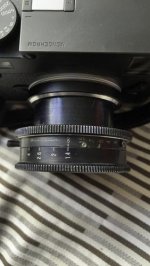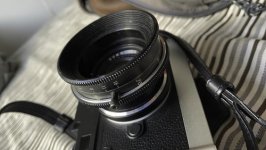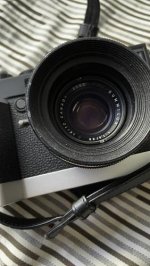Phil_F_NM
Camera hacker
Yeah, I am pining over a 50/1.9 Hexanon, and I'd never touch one for this kind of modification.
The method bluesun mentioned to effectively give more close focus would work just as well but because the coarse thread of the LTM mount, it would allow for a lot of play. This could be cured by using a brass (or ABS) ring as a shim to stand the lens off the mount. I'm measuring this now against my 5cm f/2 Super Rokkor mounted on my M4. A shim 1.5mm thick gets focus down to about 27 inches. Unscrewing the lens any further will not allow enough purchase of the threads in the mount and creates the possibility of stripping the threads and/or dropping the lens.
Phil Forrest
The method bluesun mentioned to effectively give more close focus would work just as well but because the coarse thread of the LTM mount, it would allow for a lot of play. This could be cured by using a brass (or ABS) ring as a shim to stand the lens off the mount. I'm measuring this now against my 5cm f/2 Super Rokkor mounted on my M4. A shim 1.5mm thick gets focus down to about 27 inches. Unscrewing the lens any further will not allow enough purchase of the threads in the mount and creates the possibility of stripping the threads and/or dropping the lens.
Phil Forrest








